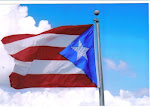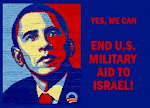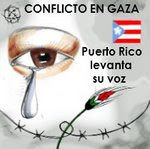Last Friday night, a married couple entering their home in the town of Hatillo, Puerto Rico, was startled by two armed burglars. The husband was fatally shot, becoming the 1,000th murder victim of 2011. This was Puerto Rico’s highest annual homicide toll — until the record was surpassed the next day.
On average, someone is murdered every 7 1 / 2 hours in Puerto Rico, a U.S. territory populated by 3.7 million American citizens. At least half of these murders involve drug trafficking organizations, whose growing presence has bred a culture of violence that emboldens criminals and threatens the lives of innocent people. The homicide and unemployment rates in Puerto Rico are higher than those of any U.S. state.
Much has been said about the Mexican drug wars that have left 40,000 dead since 2006. Yet proportionally, the level of violence in Puerto Rico is higher than in Mexico. Last year there were 26 homicides for every 100,000 Puerto Ricans vs. 18 for every 100,000 Mexicans, according to the U.N. Office on Drugs and Crime. Puerto Rican police are clearly overwhelmed.
One would think the federal government would see its obligation to intervene. Controlling the flow of drugs, dirty money and illegal weapons is a national priority. Yet Washington has been slow to react.
Violent crime was not always a concern in Puerto Rico. Throughout the 1970s, safety in the San Juan metropolitan area was comparable to that in similar-size cities in the continental United States. This changed in the 1980s, when Colombian cartels flooded the island with drugs. Criminal activity, no longer confined to drug hot spots, quickly spread throughout the San Juan metro area.
In time, a fragile truce was brokered. Walls went up around neighborhoods, not just the affluent ones, and security guards were hired. Puerto Rican governors periodically activated the National Guard to back up police on drug raids. It was a shocking display of force, but residents got used to it.
The recent outburst of violence, however, is more intense. It has been fueled by the recession and, indirectly, by Mexico’s aggressive drug interdiction campaign.
The recession devastated the Puerto Rican economy. From 2006 to 2010, gross national product and employment there contracted at a rate three times higher than that of the United States overall, according to the Center for the New Economy. This economic downturn coincided with crackdowns on drug cartels by the Mexican and U.S. governments, which caused some drug traffic to shift to Caribbean routes. Puerto Rico’s unimpeded access to the mainland made it an ideal entry point to the U.S. drug market. The Drug Enforcement Administration has reported a marked increase in drug seizures in the past two or three years. When drug traffic increased during this period, plenty of impoverished young men were willing to move it along for an easy buck.
Puerto Rico’s police force has approximately 17,000 officers — making it the second-largest U.S. force — but is still ill-equipped to combat this crisis. In a September report, the Justice Department accused the police department of constitutional violations, corruption and statistical manipulations.
For more than a year, the Puerto Rican government has sought help from the Justice and Homeland Security departments. Attracting and retaining federal agents in Puerto Rico is difficult. The local offices of the Bureau of Alcohol, Tobacco, Firearms and Explosives; the DEA; and U.S. Immigration and Customs Enforcement are severely understaffed. Puerto Rican officials have also complained that the Coast Guard and U.S. Customs and Border Protection lack equipment to intercept drug shipments.
Since 2008, Puerto Rico has received about $260 million in direct federal support for crime prevention and forensic science, judicial systems, police and corrections, crime victims and rehabilitation of substance abusers. During the same period, Washington has allocated $1.6 billion for the Merida Initiative, a U.S.-Mexico partnership to combat drug production and traffic in the region.
The U.S. response to the Mexican drug war is appropriate. Mexican drug smuggling and spillover violence are a national security threat. Puerto Rico deserves an equivalent response. It is the main drug pipeline in the Caribbean, and the safety of almost 4 million Americans is threatened by the presence of drug organizations.
Drug violence has spilled over the U.S. border — just not the border most Americans think of. If drug cartels set up shop along our southern border states and their murder rates increased fivefold, to the level found in Puerto Rico, the federal response would be immediate. As American citizens, Puerto Ricans deserve the same reaction.
Drug violence at America’s other southern border
By Gretchen Sierra-Zorita, Published: November 24
martes, 29 de noviembre de 2011
miércoles, 23 de noviembre de 2011
Ana María Martínez soprano puertorriqueña.
Ana María Martínez soprano puertorriqueña. Se le considera “la voz más bella de Latinoamérica.”
Se ha presentado en el Metropolitan Opera de New York, Staatsorper de Viena, Royal Opera House-Covent Garden de Londres, Deutsche Opera Berlin, entre otros.
Martinez cuenta con más de veinte producciones.
Ana María Martínez es egresada de Juiliard Schooll de New York con Bachillerato y Maestría en música.
Etiquetas:
Musica,
Puertorriqueños en Estados Unidos,
Video
jueves, 17 de noviembre de 2011
La fiebre de Victoria’s Secret.

Hacer fila desde las 4:00 AM para comprar ropa interior de mujer en Victoria’s Secret. Como es posible!
Foto de Mariel Mejía/El Nuevo Día.
Etiquetas:
Constitucion. Puerto Rico
martes, 15 de noviembre de 2011
domingo, 13 de noviembre de 2011
Suscribirse a:
Entradas (Atom)
















